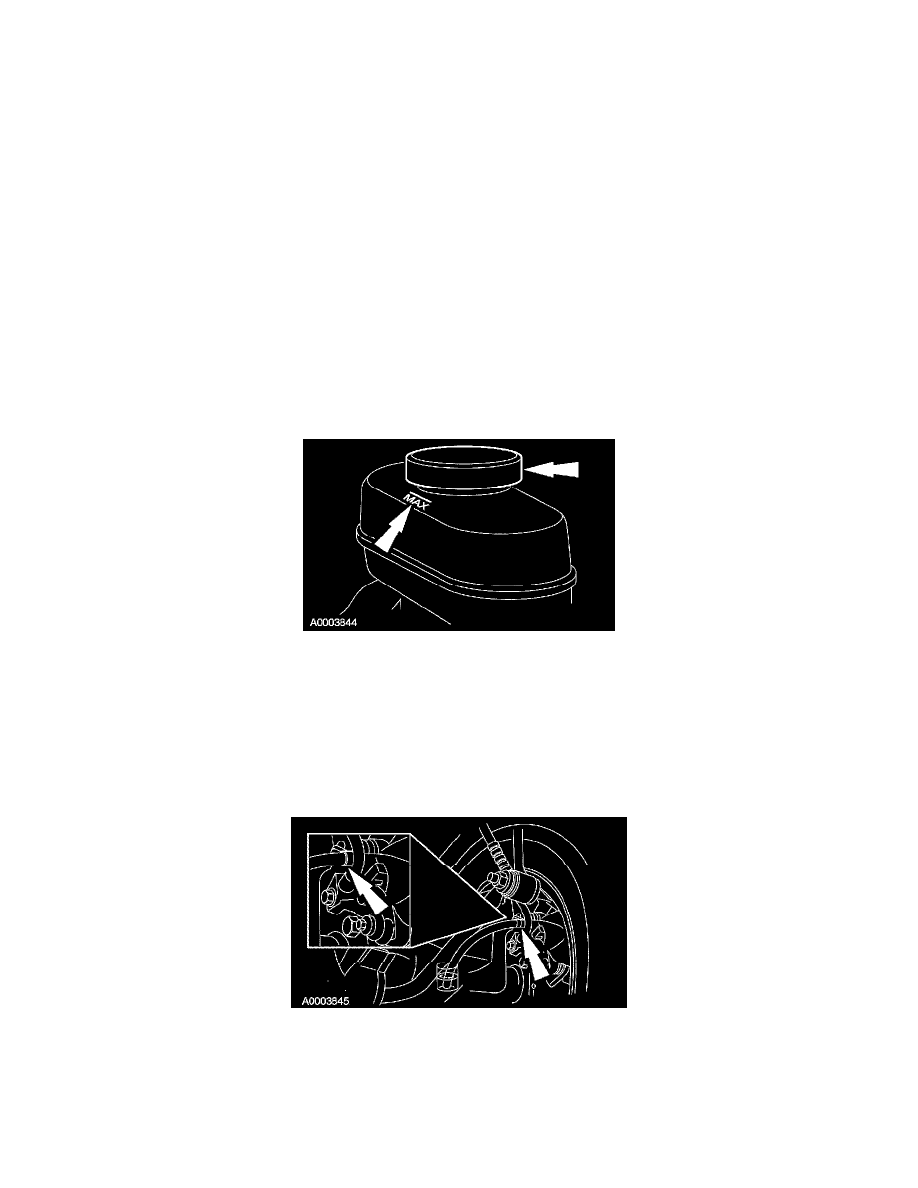Mustang V6-4.0L VIN N (2006)

render the brakes inoperative. Failure to follow these instructions may result in personal injury.
WARNING: Brake fluid contains polyglycol ethers and polyglycols. Avoid contact with eyes. Wash hands thoroughly after handling. If
brake fluid contacts eyes, flush eyes with running water for 15 minutes. Get medical attention if irritation persists. If taken internally, drink
water and induce vomiting. Get medical attention immediately. Failure to follow these instructions may result in personal injury.
CAUTION: Brake fluid is harmful to painted and plastic surfaces. If brake fluid is spilled onto a painted or plastic surface, immediately wash it with
water.
CAUTION: Do not allow the brake master cylinder reservoir to run dry during the bleeding operation. Keep the brake master cylinder reservoir filled
with the specified brake fluid. Never reuse the brake fluid that has been drained from the hydraulic system.
CAUTION: After the installation of a hydraulic control unit replacement, conduct the Brake System Pressure Bleeding procedure before the
diagnostic tool based bleed procedure. A diagnostic tool based bleed procedure is then required to completely bleed the system. Follow the
instructions from the diagnostic tool.
NOTE: If the hydraulic control unit (HCU), or any component upstream of the HCU are installed new, carry out the Brake System Pressure Bleeding
procedure first without the diagnostic tool, followed by the Brake System Bleed procedure using the diagnostic tool. The Component Bleeding - Rear
Brake Caliper procedure is not required as new rear calipers were not installed.
NOTE: When any part of the hydraulic system is disconnected for repair or installation of new components, air can get into the system and cause
spongy brake pedal action. This requires bleeding of the hydraulic system after it is correctly connected. The hydraulic system can be bled manually or
with pressure bleeding equipment.
1. Clean all the dirt from the area and remove the brake master cylinder filler cap. Fill the brake master cylinder reservoir with the specified brake
fluid.
2. NOTE: Master cylinder pressure bleeder adapter tools are available from various manufacturers of pressure bleeding equipment. Follow the
instructions of the manufacturer when installing the adapter.
Install the bleeder adapter to the brake master cylinder reservoir and attach the bleeder tank hose to the fitting on the adapter.
3. NOTE: Bleed the longest line first. Make sure the bleeder tank contains enough specified brake fluid to complete the bleeding operation.
Remove the RH rear bleeder cap and place a box end wrench on the RH rear bleeder screw. Attach a rubber drain tube to the RH rear bleeder
screw and submerge the free end of the tube in a container partially filled with clean brake fluid.
4. Open the valve on the bleeder tank.
5. Loosen the RH rear brake caliper bleeder screw. Leave open until clear, bubble-free brake fluid flows, then tighten the RH rear brake caliper
bleeder screw and remove the rubber hose and install the RH rear bleeder cap.
^
To install, tighten to 10 Nm (89 inch lbs.)
6. Continue bleeding the system, going in order from the LH rear brake caliper bleeder screw to the RH front disc brake caliper bleeder screw ending
